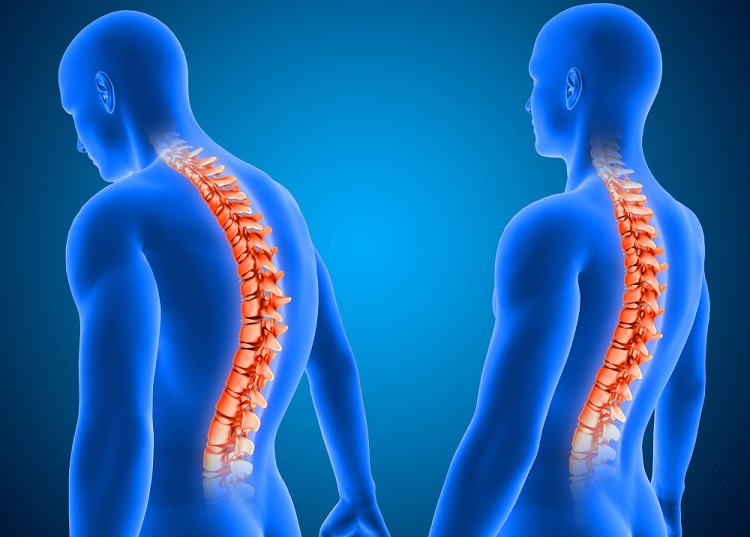Introduction
Osteopathic medicine is a distinctive form of medical practice that goes beyond symptom treatment. It seeks to understand the underlying causes of discomfort and disease, emphasizing the interrelated nature of the body’s systems.
In today’s world, where personalized and holistic healthcare is increasingly sought after, osteopathic medicine is gaining traction.
Let’s explore what this fascinating field entails, its methodologies, benefits, and how it contrasts with other practices like chiropractic care.
What is Osteopathy?
Osteopathy is a holistic healthcare approach, using hands-on techniques to enhance body balance and promote self-healing. It focuses on restoring wellness by addressing physical imbalances.

Philosophy and Principles
Osteopathy is grounded in the belief that the body has an innate ability to heal itself. Practitioners view the body as a unified whole, where each part is interconnected.
A disturbance in one area can lead to issues elsewhere, and osteopathic physicians (DOs) seek to identify and treat these underlying problems rather than just the symptoms.
History and Evolution
Osteopathy was founded in the late 19th century by Dr. Andrew Taylor Still, who was dissatisfied with the medical practices of his time.
He developed osteopathic manipulative treatment (OMT), a method involving hands-on techniques to promote overall health.
Over time, osteopathy has evolved to include modern medical practices while retaining its core holistic philosophy.
Osteopathic Treatments Explained
Osteopathic treatments encompass gentle manipulations and hands-on therapies, aiming to restore bodily equilibrium and alleviate discomfort effectively. These specialized approaches promote natural healing and wellness.

Manual Techniques
Osteopathic treatments often involve manual techniques that include stretching, gentle pressure, and resisted movements.
These are tailored to the individual’s needs and can address various health conditions, from muscular tension to digestive disorders.
Conditions Addressed
Osteopathic medicine can help with a wide array of health problems, such as:
- Chronic pain
- Headaches and migraines
- Arthritis
- Digestive issues
- Respiratory disorders
Treatment Experience
An osteopathic session usually begins with a comprehensive assessment of the patient’s medical history, physical examination, and possibly diagnostic tests.
The practitioner then uses manual techniques, providing a unique treatment plan that considers the patient’s entire well-being, not just the specific complaint.
Benefits of Osteopathy
Experience relief from pain and improved mobility through Osteopathy’s tailored techniques, fostering holistic well-being. By addressing root causes, Osteopathy enhances your body’s innate healing capacity.

Physical Advantages
Osteopathy offers physical benefits like relief from pain, increased mobility, improved posture, and enhanced performance in daily activities. By targeting the root causes of discomfort, it promotes long-term health.
Mental and Emotional Gains
Beyond physical healing, osteopathic medicine recognizes the importance of mental and emotional well-being. Patients often report feelings of relaxation, reduced stress, and a greater sense of overall harmony.
Scientific Studies
Recent research supports the effectiveness of osteopathic treatment. Studies have shown positive outcomes in treating conditions like lower back pain, migraines, and even mental health disorders such as anxiety and depression.
Osteopathy vs. Chiropractic Care
Osteopathy emphasizes holistic body balance, combining hands-on therapies with a wider health perspective, while chiropractic care focuses on spinal adjustments to enhance nervous system function.
Both approaches offer unique paths to wellness based on individual preferences and needs.

Similarities and Differences
While osteopathy and chiropractic care share a focus on manual manipulation, they diverge in philosophy and approach.
Chiropractic primarily targets the spine and nervous system, while osteopathy takes a broader view, considering the entire body.
Chiropractors often employ more forceful adjustments, whereas osteopathic manipulations may be more subtle and varied.
Patient Perspectives
Individual experiences can vary greatly between osteopathic and chiropractic treatments.
Some may prefer the comprehensive and gentle approach of osteopathy, while others might opt for the more specific interventions of chiropractic care.
Choosing between the two often depends on personal preference and the nature of the ailment.
Finding an Osteopathic Practitioner
When searching for an osteopathic practitioner, prioritize their credentials, experience, and patient reviews to ensure quality care aligned with your needs.
Don’t hesitate to schedule consultations to gauge their approach and compatibility with your wellness goals.

Qualifications and Licensing
Finding a skilled osteopathic practitioner requires careful consideration. Look for professionals with recognized degrees and certifications from reputable institutions. Licensing and adherence to regulatory standards are also critical.
Search Resources
Online directories, healthcare provider networks, and personal referrals can aid in finding a qualified osteopathic practitioner.
Don’t hesitate to ask questions or request an initial consultation to ensure the practitioner’s approach aligns with your needs.
Patient Testimonials
Patient testimonials provide a glimpse into the real-world benefits of osteopathic medicine. From chronic pain sufferers finding relief to athletes enhancing performance, personal stories illustrate the diverse and profound effects of osteopathic treatment.
Osteopathy for the Future
Osteopathy’s future shines bright as it continues to evolve, integrating technology and research to advance its holistic approach to healthcare.
With a growing emphasis on preventive care, Osteopathy is poised to play a pivotal role in promoting lifelong well-being.

Emerging Trends
The future of osteopathy looks promising, with continued integration into mainstream healthcare and evolving research. Innovative techniques and technologies are expanding the field, enabling more personalized and effective treatments.
Integration with Mainstream Medicine
Osteopathy’s holistic approach is increasingly resonating with healthcare professionals and patients alike. Collaboration between osteopathic practitioners and traditional medical doctors offers a more comprehensive and patient-centered care pathway.
Conclusion
Osteopathic medicine represents a compassionate, holistic approach to healing, focusing on the entire individual rather than isolated symptoms. As awareness grows, so too does the demand for qualified practitioners and integrative care.
For those intrigued by this healing art, numerous resources, including books, websites, and educational institutions, can deepen your understanding. And if you’re considering taking the next step towards holistic well-being, finding osteopaths near you has never been easier.
Related Posts:









